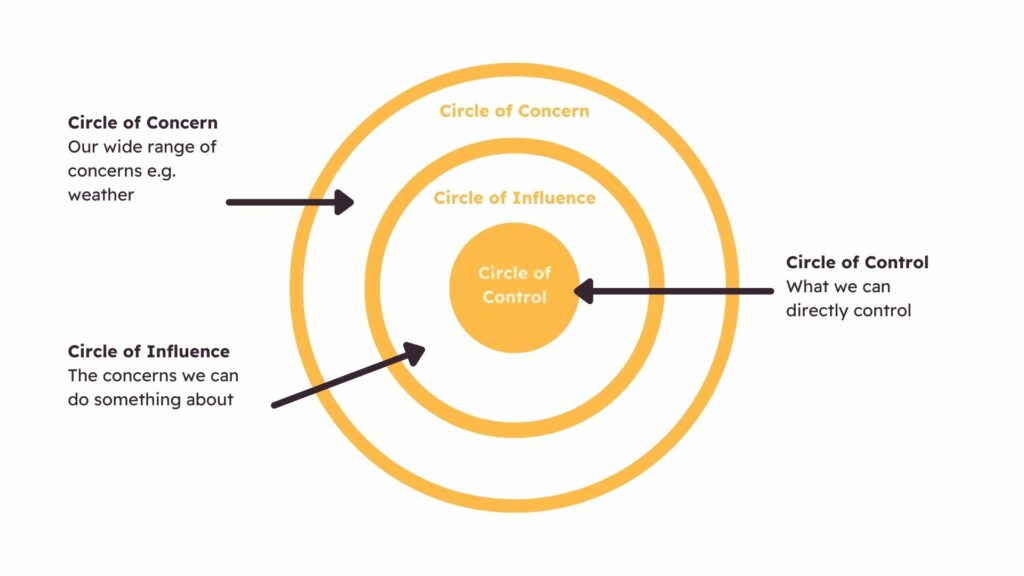The circle of concern, influence, and control
The circle of concern, influence, and control
5 minutes

The circles of control, influence, and concern help us understand what we can and can’t control. The model was created by Stephen Convey in his book, The 7 habits of Highly Effective People.
There three circles are:
- The Circle of Concern: The range of worries we might have about something.
- The Circle of Influence: The concerns we have some influence over and can do something about – either directly or indirectly.
- The Circle of Control: What we can directly control. This control relates to what we can directly make happen as a result of our choices, regardless of the agreement of others. As such, our Circle of Control can only relate to ourselves and to our conscious choice.
We have the power to choose where we focus our energy and attention. If we concentrate on issues beyond our control, we risk increasing our stress.
Instead, by focusing on our circle of influence, we become more proactive. This means directing our energy toward actions we can control, leveraging our strengths and connections to make a positive impact. We can also decide to let go of concerns that don’t serve us well, allowing us to focus on what truly matters.
Ultimately there is only one thing that you can control and that is…YOU. You may be able to influence what is happening around you however you can only control what you can Say, Think, Feel and Do.
Go through this model personally or during your one-on-ones with your team members, to help yourself or someone through situations where they are stuck.
This exercise helps to identify if time and energy is being invested into the wrong circle.
Download this activity to run in your next 1:1.
Hellomonday